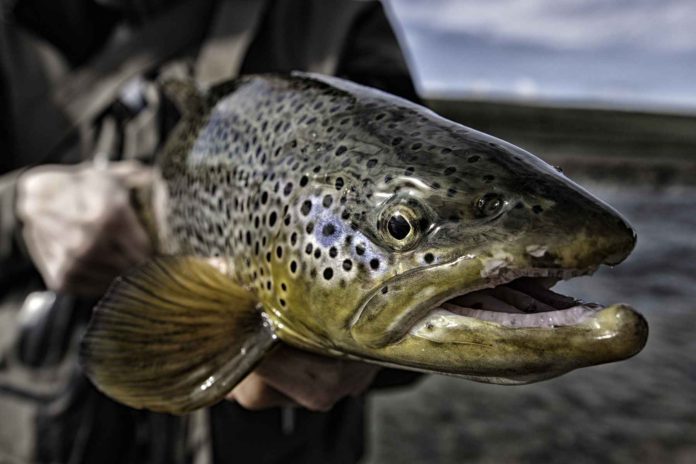I just read a thought-provoking social media post on all the benefits of “Euro-nymphing.” For those of you who haven’t heard about the technique, it’s a style of tight-line nymph fishing that utilizes long, color-coded leaders and weighted flies, and that’s extremely popular with tournament anglers in Europe and elsewhere.
Fly fishers usually fall into two different camps with regard to European-style nymph fishing. Anglers who prioritize results — in other words, folks who want to hook as many fish as possible — tend to embrace it. Which makes sense, as it’s an effective alternative to more traditional styles of fly fishing.
At the same time, anglers who are less interested in numbers and more focused on the overall quality of the experience don’t seem to gravitate to the tactic. Since you can Euro-nymph without a fly line — monofilament works equally well when you’re lobbing weighted nymphs a short distance — and since you don’t really “cast” when you’re using the technique, it doesn’t always feel like fly fishing.
On a personal note, I tend to fall into the second category. I love to cast my fly rods — as I’ve stated any number of times over the years, casting is the true essence of our sport — and any technique that makes fly lines and fly casting optional is going to be way, way down on my list of preferred options.
When I finally finished reading the afore-mentioned social media post on Euro-nymphing, as well as the dozens of follow-up comments, I couldn’t help but reflect on the fact that different anglers have different priorities, and that those priorities invariably impact the way we fish.
I’m a firm believer that there’s one overarching reason to choose fly fishing over the alternatives, and that’s because it’s more fun and more enjoyable. There are easier ways to catch fish, of course — bait fishing and spin fishing both come to mind — and it’s obvious that those other methods don’t require as much skill, or as much perseverance, or as much of a financial investment. If we want to be frank, we should acknowledge that most of us prefer fly fishing in spite of the fact it’s not the most efficient way to spend our time on the water.
In light of that reality, it makes sense to consider where our priorities reside and then decide how we can wring the most enjoyment from our fishing.
I’ve been fortunate to spend time with some truly incredible anglers over the years and most of them know exactly what they’re looking for when they pull on their waders and grab their rods. Sometimes it’s all about solitude. An awful lot of us use fly fishing to escape from the hustle & bustle that infuses our daily lives. When we wade into a pristine trout stream, or paddle across a remote lake, or stalk a vast saltwater flat, we experience a much-needed respite from the overwhelming cacophony of modern existence. Nature in the raw is a balm for the soul, while solitude in nature is as sure a path to sanity and good health as any of us are likely to find.
Of course, there are also times when our fishing is more about companionship. We’re a social species, we humans, and the simple act of sharing time on the water has a deep and sometimes profound impact on our psyche. When we fish with friends or family, the world around us comes into clearer focus and we have the option of sharing our thoughts and visions, as well as our passion for nature, with people we truly like and respect. There are very few things more enjoyable than spending a day fishing with family or friends — and I’m definitely not the only one who feels that way.
Then there’s the inherent excitement of our sport. Some of us are drawn to the act of living life out on the ragged edge, whether that means targeting unusual species in exotic locations, or wading deep in fast water, or floating a stretch of river that others deem too dangerous, or fishing with one eye on the brown bear wandering down the far bank. A spike of angling-related adrenaline invariably makes us feel more alive, while the excitement that infuses our sport helps banish the mundane and recharge our mental and emotional batteries.
There’s also beauty. I know a number of anglers who find that the eye-catching splendor of the natural world exceeds even the finest in art, or literature, or music. Sometimes it’s a sky painted with colors beyond description. Other times it’s a jagged mountain range defining a distant horizon, or a copse of aspen outfitted in autumn gold, or a handsome bull elk in a verdant meadow, or a doe drinking from the river while the mist glitters in the morning’s first sunlight. Sometimes it’s a bald eagle soaring by on the lightest of afternoon zephyrs, or the artist’s palate gracing the gentle curve of the trout we’ve just brought to hand. Whatever form it happens to take, it’s hard to argue with Ralph Waldo Emerson, who wrote: “To the dull mind nature is leaden. To the illumined mind the whole world burns and sparkles with light.”
And finally, there’s the act of fishing itself. Fly casting, done well, can help us slip into an actual moving meditation. Add bird song, and fresh air, and sunshine, along with the experience of standing thigh-deep in clean, life-giving water, and our angling can border on the sublime.
Since I’m often in search of balance in my life, I invariably try to hit as many of those high notes as I possibly can. Sometimes beauty and solitude are the day’s highlights. Other times it’s excitement and companionship. There are also times when it’s simply the sensation of wading deep and finding the perfect rhythm for my casting. Regardless, I’m almost always looking for something besides the trout I love to target. As Henry David Thoreau put it, “Many men go fishing all of their lives without knowing that it is not fish they are after.”
Which brings us full circle to Euro-nymphing. Is it something you should explore? Frankly, I can’t answer that question. But if you look inside and then ask yourself what it is about your angling that really makes you smile, the answer shouldn’t be too hard to ascertain.
Credit: Source link






























